The Sole of Punjab- Jutti making
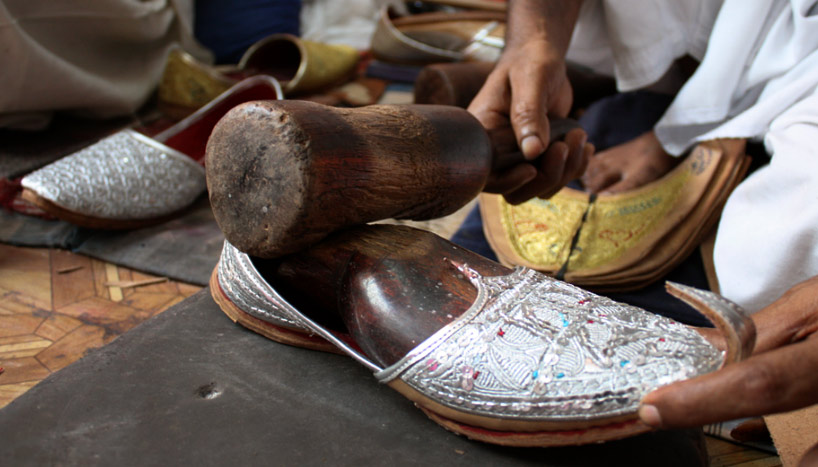
One of the earliest materials, durable and versatile, used for every purpose from storage of food to protection from the elements, was labeled as “impure”, once humans settled down in large agricultural societies.Leather, the material that on one hand, adorned the feet of kings, on the other hand, pushed its workers outside the boundaries of their cities and tagged them as “untouchables”. But this did not stop the leathercraftsmen from making not just sturdy shoes for the common man, but also the most exquisite footwear for the royalty.
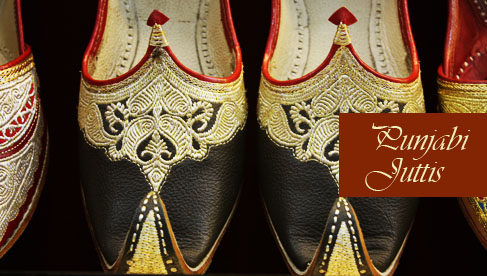
Over the course of centuries, a rich variety of footwear was created in India, in many different shapes and forms, using an assortment of materials and decorations. Perhaps, the enormous diversity of climatic conditions of the country, ethnic and cultural traditions, ritual conventions, and exposure to the outside world through voyages and trade, was catalytic in bringing about this abundance of styles.

Among these, the Jutti is one of the styles of footwear that has continuously evolved due to numerous influences from near and far. “Jutti” is an Urdu word for a shoe with a closed upper attached to a sole. Juttis come in many variations according to regional tradition, period and shoemaker, and are adapted according to the environment and materials. One of the unique characteristics of this kind of footwear is that they have no left and right distinction, and are inevitably flat-soled.
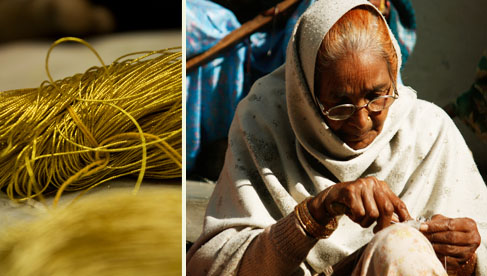
In Northern India, especially in Punjab, the curled upturned toe is a common feature of footwear, as is the beautiful, intricate embroidery, which today is still executed completely by hand. Earlier, shoes which have come to be known as Punjabi Juttis throughout the world; were embroidered with pure gold and silver wires all over, covering the entire surface of the pair. Some experts were even able to make such light shoes the cobblers used to say that even sparrows could fly with them.
Today, the jutti has evolved a multitude of styles, yet the fundamentals of its form and technique remain the same. Construction of one pair of juttis involves people from different communities: the “Chamars”, who process raw hides, the “Rangaars”, who colour it and the “Mochis”, who assemble the pieces together and do the final stitching and embroidery.
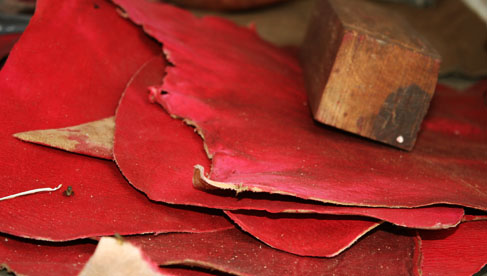
The process of making this most desirable footwear starts from a tannery where raw hides are processed using vegetable tanning method. For this, a substance called tannin, which is extracted from the bark of Babool or Kikkar trees, is used. It is in the tannery that an animal hide becomes strong, flexible, water resistant and consequently, wearable.
For colouring, sarfoola (yellow) and arsi gulabi (green) powderedpigments are mixed in water to make a thin solution of different shades of red and applied to the pieces of leather using a local shaving brush.
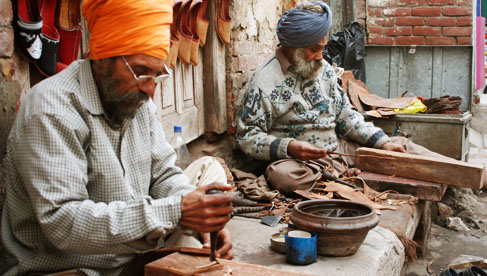
This processed leather is then cut into the components of the footwear. The shoe upper, known as Panna, is made of one piece of leather or textile,embroidered and embellished with brass nails, cowries (shells),mirrors, bells and ceramic beads. Even the bonding from the upper and back (known as Adda) to the sole (known as Talla) is done by cotton thread that is not only eco-friendly but also enmeshes the leather fibers with great strength.
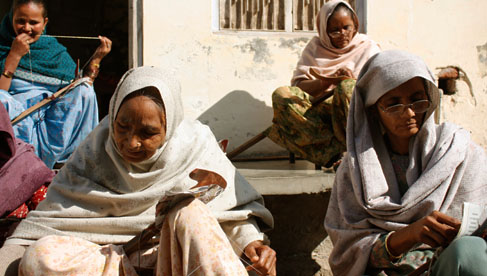
While men handle the cutting, shaping and assembling of the shoe, the women work beautiful embroideries on the top, back and sometimes even instep of the jutti. Embroidering the juttis involves the use of stencils, for cutting and tracing designs on to the leather parts of the shoes. They range from simple cut-out shapes to be filled with simple embroidery, to intricate punches, weaves and embroidered designs.
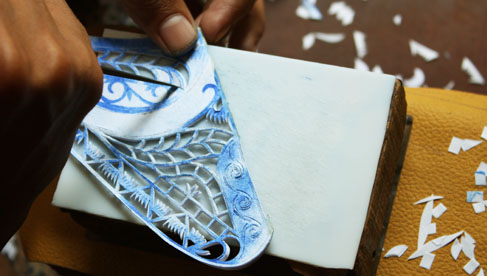
In Fazilka town, which is famous for ‘tilla’ (golden or silver thread, earlier made with real gold and silver) embroidery, intricate paper checks are hand cut by professional check artists, making it an art form in itself. These are pasted on the shoe uppers, backs and insoles and distributed amongst women who then embroider these with gold and silver tilla. Fazilka’s Tilla juttis are the most sought after, for their detailing of design, intricate embroidery and impeccable finishing. The most elaborate ones have every inch covered with the tilla and appear as if made of solid gold or silver, making them a class apart.
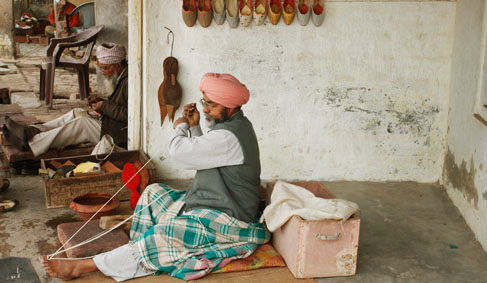
In the towns Muktsar and Malaut, which are abodes of Punjabi jutti, the basic check designs are traced and embroidered on Rexene stencils, which are then pasted on top of the leather jutti. This method ensures faster completion, to meet the high demand these juttis have.
Patiala being the biggest market for all types of juttis, has now a large variety of juttis in designs, keeping with the trends. Material and technique take many variations, with the use of velvet and machine embroidery, as well as lavish “dabka” (fine metal wires) work.
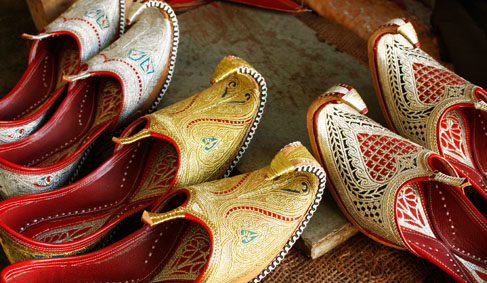
Even among the basic juttis, there are many regional variations. The Salem Shahi Juttis are named after the Mughal prince Salim (Jahangir), and are characterized by a pointed, sometimes curled toe and a spade shaped sole.While the “Lucky” jutti is called so because of a narrow mid section, “luck” meaning waist in Punjabi, the Khussa juttis stand out with their upturned front representing the curled moustache of a “Punjabi Gabru”(Punjabi young man). The Kasuri juttis, with their unique toe indent design, transcend the borders, when people bring back these unstitched juttis to Maler Kotla, Punjab, from their relatives in Pakistan.
With passage of time and dictated by technological improvement and market demand, many different materials, colours and styles are being produced. Although these novel styles are popular among trend conscious youngsters, the basic essence of this footwear still remains. There are many patrons who appreciate original craftsmanship and take only the finest of the handcrafted pieces.
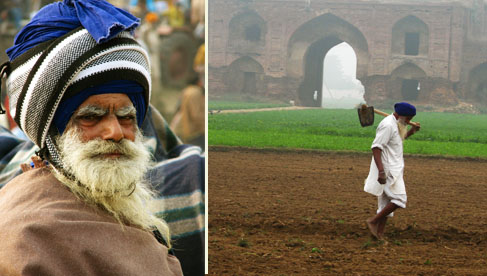
The survival of such rich crafts reflects the unstoppable spirit of tenacity and toughness of the Punjabis who enrich our culture with beautiful colours, unceasing passion and energy, and a zest for life.
By ~ Sraddha Jain

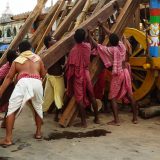
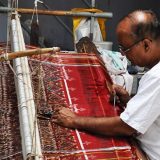
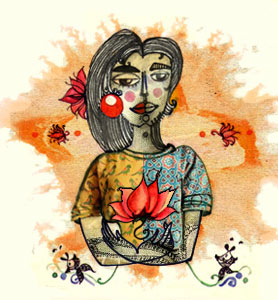
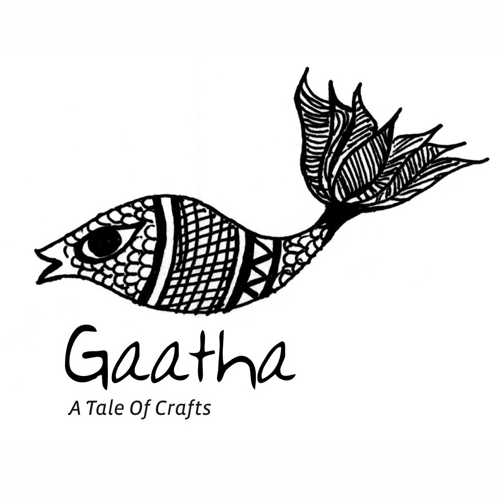


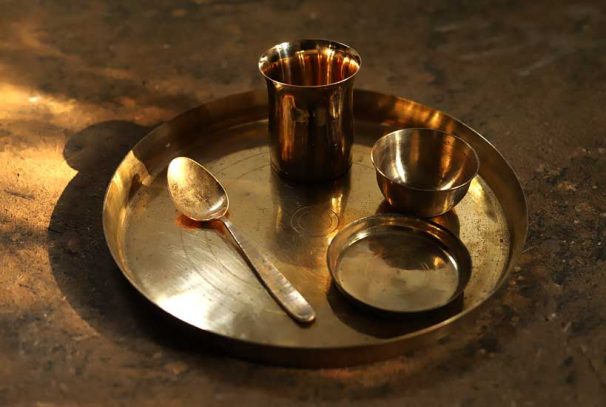
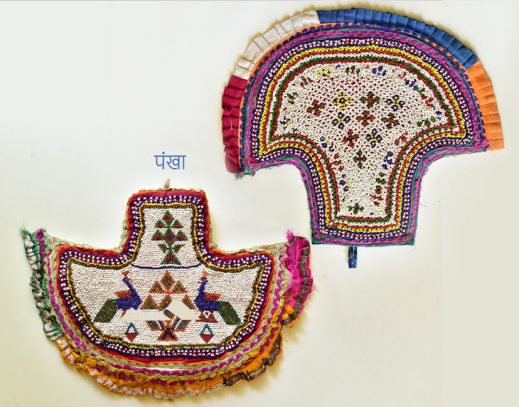
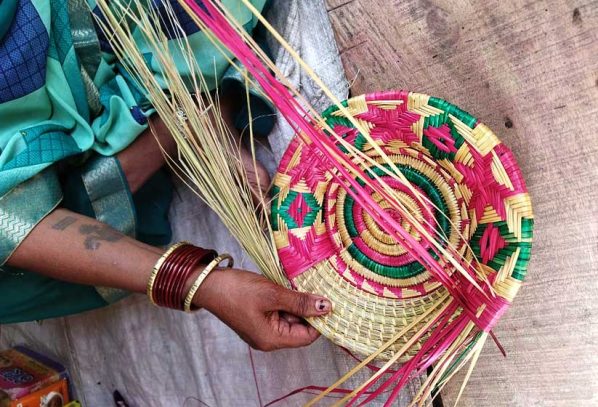

samira vij
Thanks so much for such a brilliant and informative article on juttis. I have been trying to find out the history of this art and the regional variations for so long.
Your article beautifully summates it all.
Samira
priyanka julakanti
You guys are doing a thoughtful job and keeeeeeeeep goingggggg amazing people !